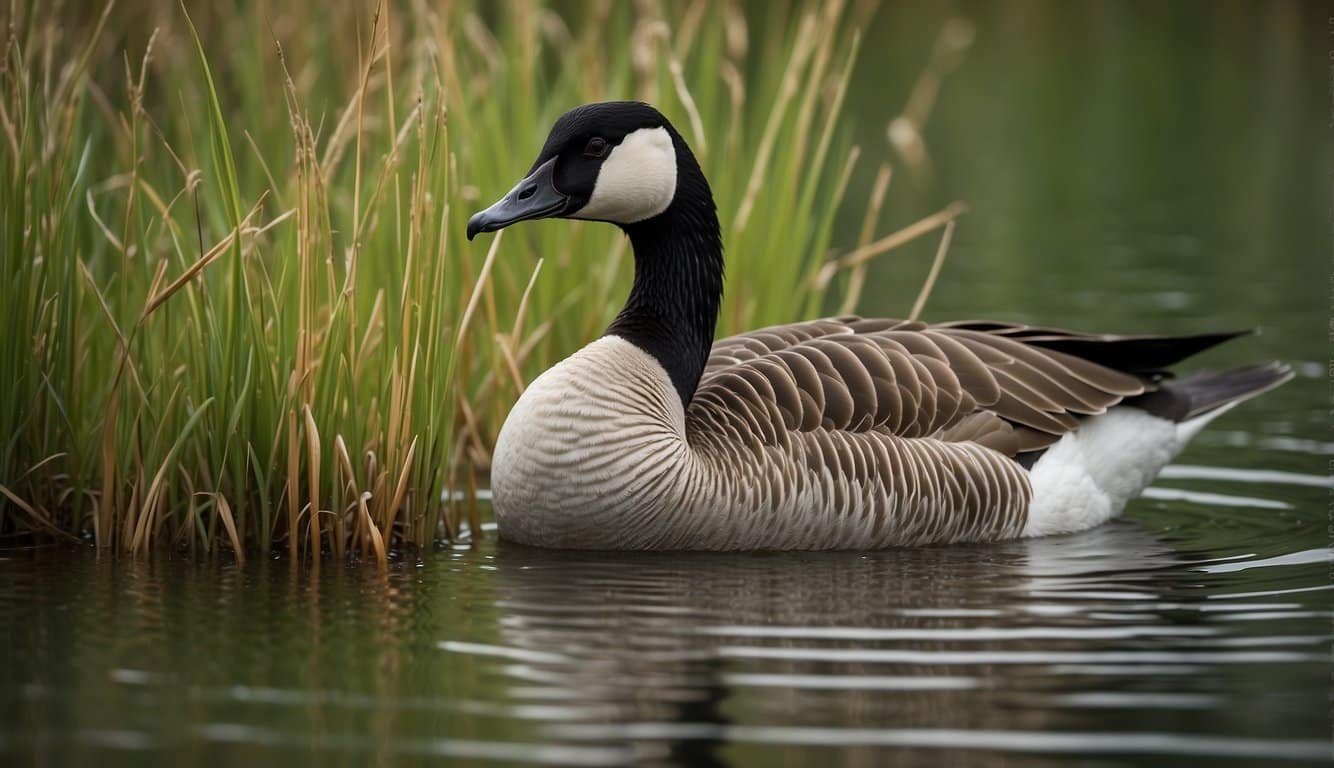Overview of Canadian Geese
The Canada goose (Branta canadensis) is a large wild bird species belonging to the family Anatidae, which also includes ducks and swans. These iconic birds are known for their black heads and necks, white cheek patches, and brown bodies. Primarily found in North America, these geese are a common sight, especially during their seasonal migrations where they fly in a distinctive V-formation.
Habitat & Behavior:
Canada geese prefer to inhabit areas close to water sources such as lakes, rivers, ponds, and marshes. They are adaptable birds and can also be found in urban parks, golf courses, and other grassy areas where they graze on a vegetarian diet.
Reproduction:
These geese are known for forming monogamous relationships and are quite protective of their nesting sites. The female lays a clutch of 2-8 eggs which she incubates for about a month while the male stands guard. After hatching, goslings are quick to leave the nest, following their parents to water.
Migration Patterns:
One of the most fascinating aspects of Canada geese is their migration. They travel thousands of miles to breeding grounds in the north during spring and return to warmer southern regions in the fall.
Challenges:
While they are admired for their beauty and the sense of wilderness they bring to urban settings, Canada geese are sometimes seen as a nuisance due to their droppings and the potential to attract predators. Their populations have grown significantly, prompting discussions on management and control efforts.
Displayed adaptability and resilience make Canada geese a successful species across varying landscapes. They continue to captivate bird watchers and nature enthusiasts with their synchronized flight and lifelong pairings.
Habitat and Behavior

The Canadian Goose is renowned for its adaptability, often found thriving in various habitats from remote wildlands to urban parks. Their behaviors, particularly migration and breeding, reveal a complex life adapted to seasonal changes.
Migration Patterns
Canadian Geese are famous for their long-haul flights across North America, where they exhibit impressive migration patterns. During migration, they travel in characteristic V-formations, which improve aerodynamics and conserve energy. These birds utilize established flyways, stretching from their northern breeding grounds to warmer southern wintering sites. They make strategic rest stops, often at the same locations yearly, to replenish their energy reserves before continuing on their journey.
Breeding and Nesting
With the breeding season comes a display of loyalty, as Canadian Geese are known to mate for life. They prefer nesting in upland habitats away from predators but will also adapt to suburban areas where conditions are safe. Goose pairs establish a territory, which they defend vigorously with loud displays. Their nests are built on the ground near water, where the female lays eggs and both parents take turns during the incubation period, which last about a month.
Diet and Feeding Habits
A diverse diet supports these birds throughout the year, consisting of grasses, seeds, berries, and insects. Grazing behavior is common, with geese feeding on lawns and parklands in urban and suburban environments. They also forage in water, tipping up to reach aquatic plants. This constant searching for food is crucial, particularly during breeding and migration when energy demands are highest. Feeding in flocks, they exhibit vigilance, watching for predators as they dine.
Canadian Geese have truly mastered the art of survival, whether it’s navigating vast distances, nurturing their young, or simply finding their next meal.
Physical Characteristics and Conservation

Canadian Geese, or Branta canadensis, are well-known for their distinctive black heads and necks, white cheeks, and brown bodies. They thrive near bodies of water like lakes, marshes, and rivers which provide them with their primary diet of grass, aquatic vegetation, and grains. Let’s get into what sets apart these geese in both their appearance and the efforts for their conservation.
Description and Measurements
The Canada Goose stands out with its long black neck and large body, contrasted by a white chinstrap which gives it a distinguished look. Adult geese typically have a body length ranging from 90 to 110 cm (35–43 in) and can weigh between 2.6–6.5 kg (5.7–14.3 lb). Their impressive wingspan stretches from 127 to 170 cm (50–67 in). During flight, their powerful muscles and long wings enable them to migrate great distances. The unmistakable honk of the Canada Goose is as characteristic as its visual features. Geese are also known for their down used in clothing and bedding, which provides excellent insulation.
Conservation Status
Once at risk due to hunting and habitat loss, the conservation status of the Canada Goose has seen a significant turnaround. They are now recognized as one of the success stories in conservation, with populations that are increasing in numbers across many regions. While their recovery is celebrated, it brings its own set of challenges; in some areas, geese have become overabundant, leading to their classification as pests due to their sometimes destructive grazing habits and potential for disease. Conservation efforts continue to strive for a balance between protecting these animals and managing their impact on both natural and human-dominated environments.

